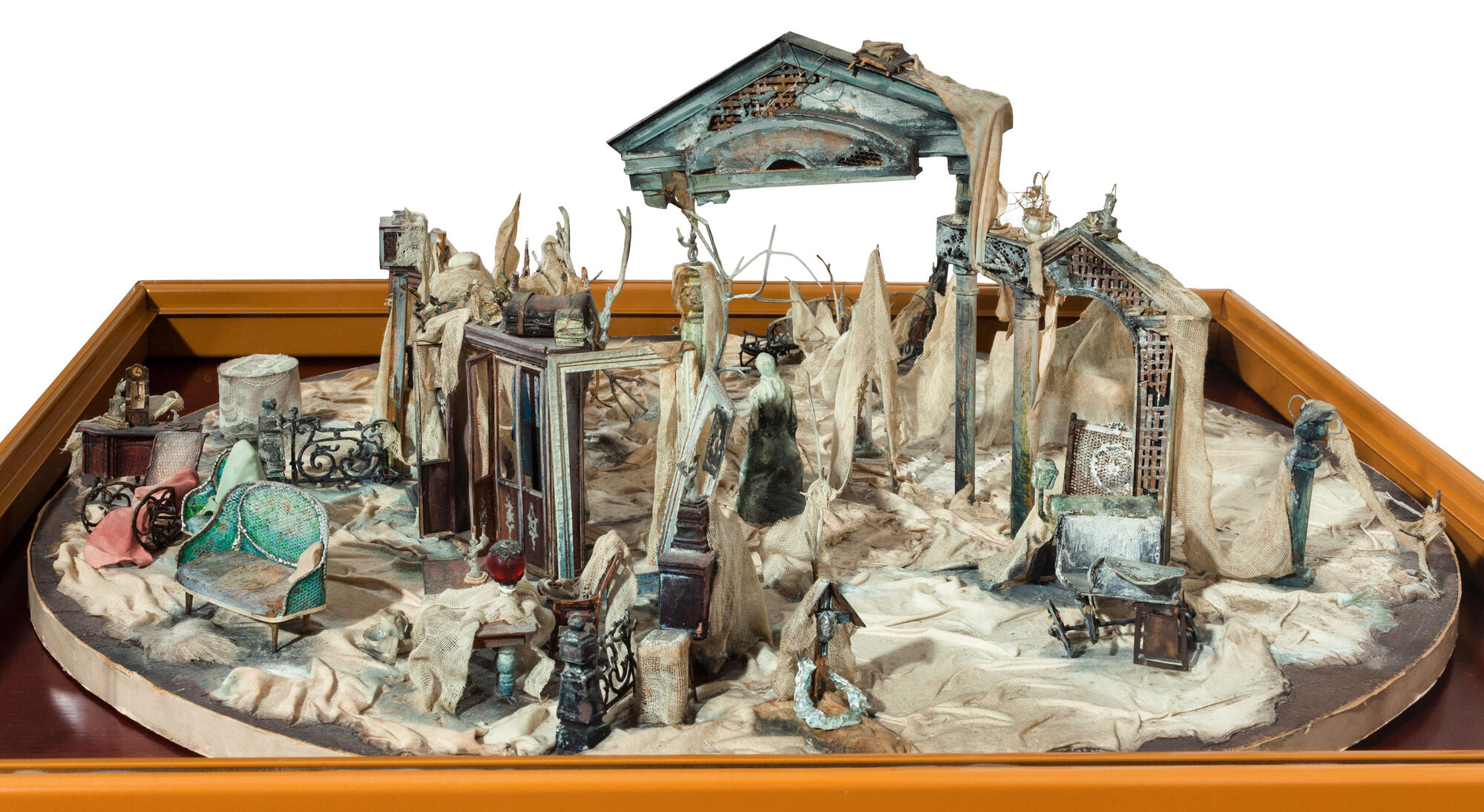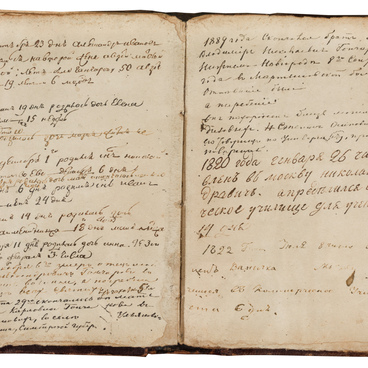The “Ivan Goncharov”s Characters in the Modern World’ exhibition houses items that describe the history of theatrical productions based on the writer’s works. It includes theatre playbills, leaflets, and photographs from Russian museums, as well as others.
The museum collection contains a scale model of the scene set design for the play “Oblomov”s Dream”, which was staged at the Ulyanovsk Regional Drama Theater in 1976. The play’s director was Anatoly Azarevich — an alumnus of the Leningrad State Institute of Theatre, Music and Cinema. He graduated from Drama Department with a degree in Directing in 1973, and since then has worked for theaters in various cities and taught acting at universities.
The scene set design for “Oblomov”s Dream’ was created by Anatoly Klimenko, a scene painter. He was born in 1934 in the town of Uvandyk, Orenburg Oblast. He is a graduate of the Sverdlovsk art and crafts school (now Yekaterinburg), who worked as a set designer in a folk theater, as well as tried his hand at painting and interior design.
Anatoly Klimenko came to Ulyanovsk in 1969 when he was invited by Vera Yefremova, Principal Director of the regional theater. In 1971, Klimenko became the theatre’s chief scene painter.
One of the main novel symbols used in the set design was a sofa, Oblomov’s favorite furniture: the novel’s protagonist chose this piece of furniture to spend all his free time on, indulging in reverie. According to the artist’s idea, there was also a carriage on stage, not harnessed and not going anywhere. Anatoly Klimenko conceived it as a reference to Nikolai Gogol’s “winged troika” — the image of Russia from his novel “Dead Souls”.
In 1977, Klimenko donated a whole collection of materials connected with the production of “Oblomov”s Dream” to the museum. It includes the scenic designs for “The Park and the Cemetery” and “At Olga Ilyinskaya’s House”, as well as the theatre playbill, costume sketches, and mise-en-scènes for the play.
The first stage adaptation of the novel “Oblomov” took place in 1909. The script for the play, staged at the Drama Theatre on Vasilevsky Island in St. Petersburg, was written by Nadezhda Proshinskaya. The play was praised for its “very successful adaptation” and “enthusiastic acting”.
The museum collection contains a scale model of the scene set design for the play “Oblomov”s Dream”, which was staged at the Ulyanovsk Regional Drama Theater in 1976. The play’s director was Anatoly Azarevich — an alumnus of the Leningrad State Institute of Theatre, Music and Cinema. He graduated from Drama Department with a degree in Directing in 1973, and since then has worked for theaters in various cities and taught acting at universities.
The scene set design for “Oblomov”s Dream’ was created by Anatoly Klimenko, a scene painter. He was born in 1934 in the town of Uvandyk, Orenburg Oblast. He is a graduate of the Sverdlovsk art and crafts school (now Yekaterinburg), who worked as a set designer in a folk theater, as well as tried his hand at painting and interior design.
Anatoly Klimenko came to Ulyanovsk in 1969 when he was invited by Vera Yefremova, Principal Director of the regional theater. In 1971, Klimenko became the theatre’s chief scene painter.
One of the main novel symbols used in the set design was a sofa, Oblomov’s favorite furniture: the novel’s protagonist chose this piece of furniture to spend all his free time on, indulging in reverie. According to the artist’s idea, there was also a carriage on stage, not harnessed and not going anywhere. Anatoly Klimenko conceived it as a reference to Nikolai Gogol’s “winged troika” — the image of Russia from his novel “Dead Souls”.
In 1977, Klimenko donated a whole collection of materials connected with the production of “Oblomov”s Dream” to the museum. It includes the scenic designs for “The Park and the Cemetery” and “At Olga Ilyinskaya’s House”, as well as the theatre playbill, costume sketches, and mise-en-scènes for the play.
The first stage adaptation of the novel “Oblomov” took place in 1909. The script for the play, staged at the Drama Theatre on Vasilevsky Island in St. Petersburg, was written by Nadezhda Proshinskaya. The play was praised for its “very successful adaptation” and “enthusiastic acting”.



